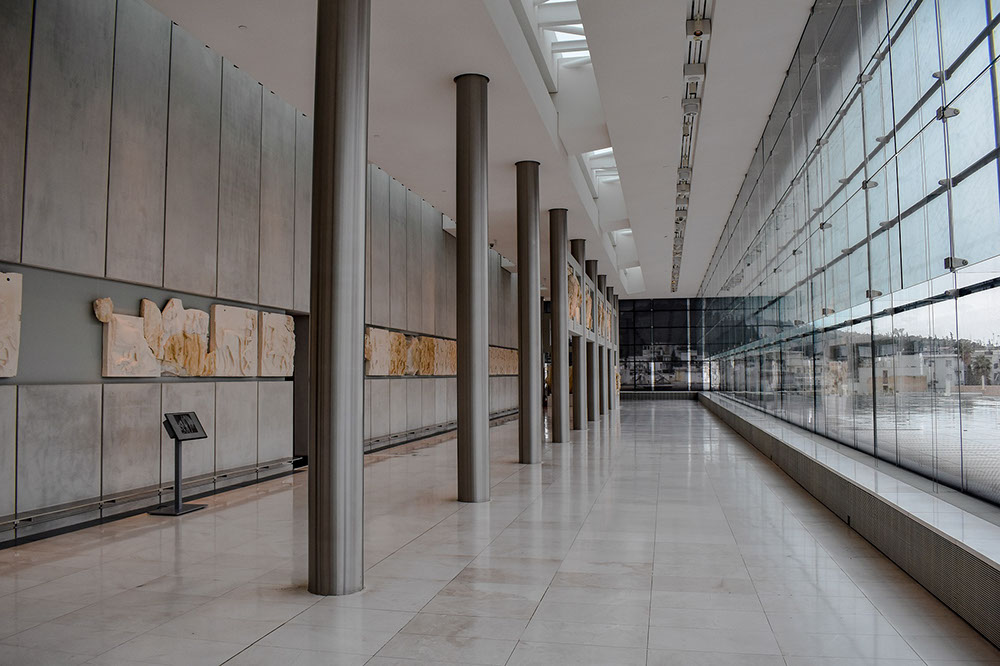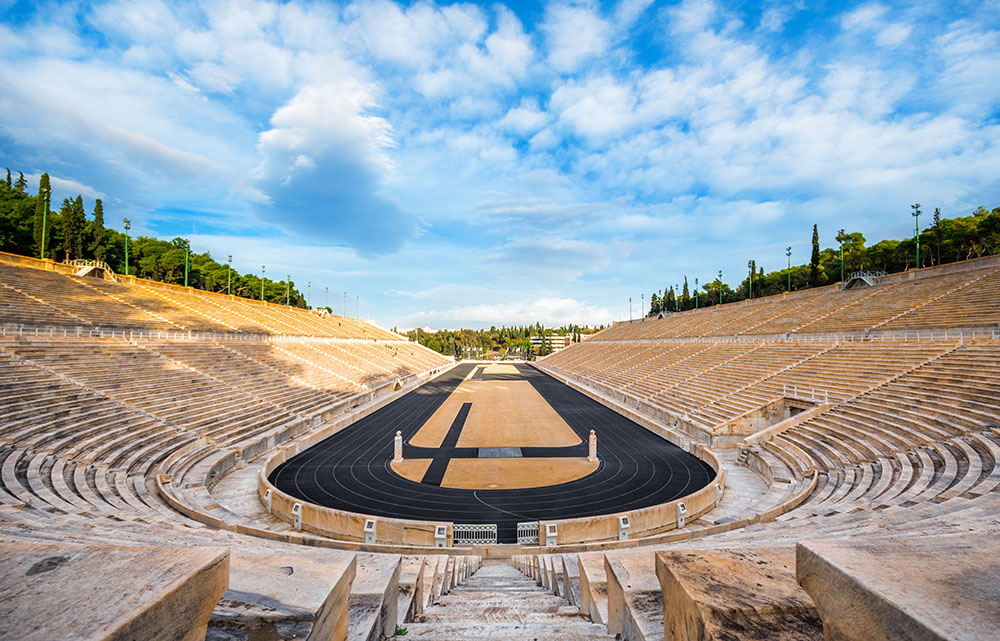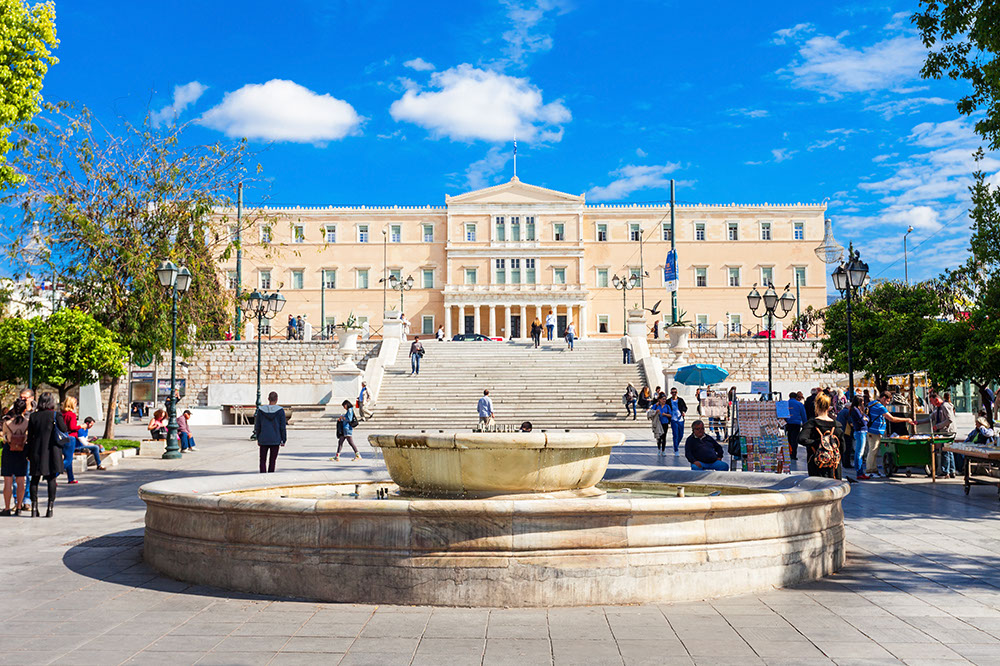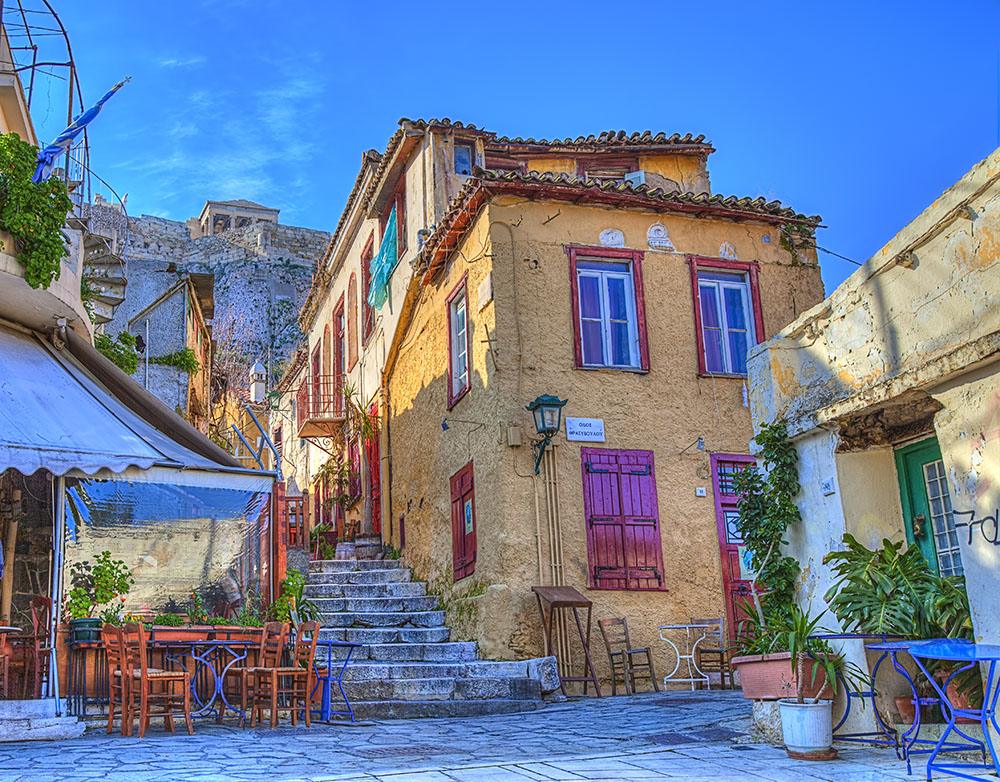Cultural walk in Athens
Akropolis.
This is the most famous attraction of the Greek capital and not unjustly. The rock, which dominates the center of Athens and is visible from all parts of the city, houses the top monuments of ancient history, which, to this day, radiate the greatness of Greek culture, with their architectural perfection and refined beauty. Dedicated entirely to the goddess Athena, the rock of the Acropolis was the most important place of worship in all of Greece, and it was the most perfectly expressed architectural marvel, envisioned by the great Athenian general Pericles, in the 5th century BC. wanting to capture in perpetuity, the greatness of Athens.The impressive architectural complex of Propylaea, with their monumental marble entrance and the two opposite wings that surround them, give a first image of the architectural elegance that governs the Acropolis, before the eyes of every visitor turn to the small temple of Apteros, Athos whose subtle finesse ranks it, deservedly, among the top architectures in the world. Passing through the propylaea, the Erechtheion emerges, a true masterpiece of Greek architecture. This magnificent Ionian temple captures all the senses, with the unsurpassed beauty given to it by its decorative members and, above all, the Caryatids, the most famous complex of female statues in the world. Beautiful and symbolic, the six Caryatids look towards the Parthenon, which stands emblematic in the middle of the Acropolis.The most famous Doric temple of antiquity, which applies the golden rule of harmony and the basic principles of all sciences, in the way of its construction, housed inside the famous ivory statue of Athena, work of the leading sculptor, Pheidias and, rightly, is considered the most perfect edifice in the world and a world symbol of culture, which shocks all the senses.
On the slopes of the sacred rock of the Acropolis are equally important monuments and shrines of worship, which gather a great deal of admiration. More specifically, in the southern slope of the Acropolis dominates the imposing theater of Herodes Atticus, the famous Herodion, which today hosts, within it, the leading artistic events of the country, within the framework of the Athens festival. Sparkling and known for its exceptional acoustics and architectural perfection, the Herodion offers unique moments and emotions, while the partially restored ancient theater of Dionysus, the oldest ancient theater in the world, echoes, to this day, the top messages of the ancient managing to move everyone.

Hadrian's Gate, Pillars of Olympian Zeus.
Leaving behind the Acropolis we head towards the city center. Architectural ornaments and exceptional monuments of ancient times, are scattered in the center of Athens, intensifying, more and more, the beauty of the Greek capital. Nearby with the rock of the Acropolis we find the Hadrian's Gate, a real masterpiece of architectural perfection. The magnificent Roman monument, made of Pentelic marble, erected by the Athenians to honor the Roman emperor Hadrian and his Tifilo-Athenian demeanor, is a typical triumphal arch and a landmark of ancient Greek architecture and sculpture. most beautiful Roman attraction of Athens.
Turning to the right, the famous Pillars of Olympian Zeus and the other architectural monuments, which spread in the extensive archeological site of the sanctuary, are already impressive. The impressive dimensions of the Pillars fully justify the characterization of Olympia as the largest ancient temple in the whole country, while the 6 centuries that took to complete its construction, along with the 104 columns of its original complete form and the brilliant ivory statues of Zeus and the emperor Hadrian, within him, make him, unreservedly, one of the most impressive creations of Greek culture.
Kalimarmaro.
Awe! This is the only word that can vividly describe what every visitor feels, facing this insurmountable monument of Athens. Against the background of the sacred rock of the Acropolis, the Kallimarmaro or otherwise Panathinaikos stadium, dominates imposingly on Arditto Avenue, at the foot of the homonymous hill and is riveted with its grandeur and historical significance. Venue of the great Panathenaic Games, the most important celebration of Athens in antiquity and the seat of the first Olympic Games of modern times, held in Athens in 1896, this amazing stadium, with a capacity of 50,000 spectators, is an architectural marvel, which scores , after all, the strongest emotions and invites the visitor to feel, for a while, a champion of life itself, wandering inside. The very interesting museum of the Olympic torches, which is housed in the hidden gallery of the stadium, will ideally complement a visit that will be unforgettable for everyone.

Syntagma, Parliament.
The largest square in Athens, Syntagma Square is an impressive square, a reference point for every visitor. Surrounded by large, central boulevards and luxury hotels, Syntagma Square hosts the Parliament, where, today, the heart of the Greek Republic beats. The emblematic building of the Parliament, built as the palace-residence of the first royal couple in modern Greek history, Otto - Amalia, is a typical example of simple and unpretentious neoclassical architecture, with Doric decorative elements and many windows, which faithfully follows the orders of the measure and of harmony, as defined by Greek art. In the same place is the monument of the Unknown Soldier, framed by the two Evzones, the elite body of the presidential guard, who, every hour, carry out an extremely moving ceremony of changing the guard, which fixes the senses, with the perfect synchronization of ritual movements that govern it. The official ceremony of changing the guard, every Sunday at 11 am, with the parade of the military procession and the participation of the band, is a spectacle that no one should miss to see.

Panepistimiou Street.
The largest highway in the center of Athens hosts the most important architectural treasures of the Greek capital, through buildings and ornaments that highlight the beauty of the city. An excellent example of urban neoclassical architecture is the building of the Numismatic Museum, the former residence of the German archaeologist Erik Schliemann, which was considered the most beautiful private residence in Athens, at the end of the 19th century. The completely renovated Ilios melathron, as the building is typically known until today, continues to arouse admiration with its refined nobility, proving the innate elegance of its first owner.
The buildings that follow, however, are the ones that really manage to steal the show, with their undeniable beauty. These are the buildings that constitute the famous Athenian trilogy of neoclassical buildings, with the Academy of Athens, the University building and the former National Library being considered the most beautiful monuments of the center of Athens and the most perfect examples of neoclassical architecture in the world.
The facades of the buildings, reminiscent of ancient temples and the wonderful decorative elements, which adorn their surfaces, in combination with the statues and the wall murals, which represent themes of the spiritual life of the ancient Greeks, justify, to the fullest, the characterization of the three buildings as a trilogy of the Greek Spirit and is the epitome of architectural elegance and grace.

Stadiou Street. Plaka.
Turning left from Panepistimiou Street, at the height of Arsakeio Megaron, we reach Stadiou Street, a large avenue, which leads, again, to Syntagma Square, in the center of Athens. Klafthmonos Square is located on the busy Stadiou Avenue, which holds a special place in the history of the Athenian capital, as it was celebrated for the first time, the anniversary of the national Polygenesis. In the beautiful neoclassical buildings, which today house the Museum of the History of Athens, Othon was hosted for a while, before moving to his new Palace in Syntagma Square. Then the Old Parliament building appears, in the small, triangular square of Theodoros Kolokotronis, with the impressive equestrian statue of the great Greek chief dominating the area, in front of the impressive neoclassical palace, which today houses one of the most important museums of Athens, the National and Historical Museum of Athens. The amazing exhibits of the museum offer a complete and thorough look at Greek history and impress.
Our route leads again to Syntagma Square and Filellinon Street, with the magnificent ecclesiastical monuments on its left, the beautiful Russian Orthodox Church, Sotira Lykodimou, and the equally impressive Anglican Church of the Apostle Paul, just before the route ends in Plaka, the most picturesque part of Athens. The so-called "district of the Gods'' and, without a doubt, the most touristic part in the heart of the historic center of Athens, retains, to this day, its traditional physiognomy, consisting of a picturesque labyrinth of small alleys, which remind, without a doubt, a island state. Small archeological treasures such as the monument of Lysicrates and Aerides, among others, emerge between picturesque squares, which are full of life, while the numerous souvenir shops, beautiful cafes and excellent restaurants of traditional Greek cuisine, compose the pieces of a colorful collage , images, sounds and colors, which always remain engraved in the heart of every visitor, highlighting Athens as a top travel destination, full of endless emotions and pleasures.















